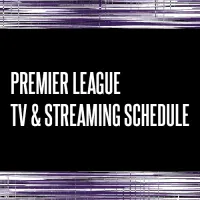I had the fortune of attending the DC United and Paris Saint-Germain friendly this past weekend, one which this site has covered fairly extensively due to the debut of Zlatan Ibrahimovic for the French side. The game, as has been noted, was scheduled at the last second as Juventus withdrew from its North American tour to prevent fatigue before the Italian Super Cup in China. One of the advantages of being DC United is that its history and location make it a fairly compelling opponent for a friendly, meaning these kind of last second deals can happen. But all of this happened before the Swedish star was transferred, so the game took on that much more importance.
I am an avowed agnostic of the international friendly, from a fan’s perspective – I rarely go out of my way seeking to attend one of these matches unless I have a specific rooting interest. I understand the positive economic benefit to teams and the desire for fans to see their favorite overseas teams play in person, but I rarely if ever watch a friendly independent of one I am covering. That said, as I sat and watched the DC v. PSG friendly this weekend, I began to think through what exactly should constitute a good friendly, i.e., what are the components of a very good international friendly that benefits both sides, fans, and American soccer in general. The following are my “ten commandments” of the successful American soccer friendly. Please feel free to share your own thoughts and amendments in the comments’ section, but I suspect these are fairly comprehensive.
[Two notes – I write this from a fan’s perspective, not a journalistic one. Media have their own criteria for a successful friendly. Second, this is for international teams coming to play MLS teams in North America, or two international teams playing in North America. This does not extend to tours of other continents teams engage in that, while similar to U.S. tours, have some differences.]
1. Both teams play as many first team players as possible, for a good portion of the game.
While the names on the front of the jerseys attract the fans (or more accurately, the crest next to the sponsor’s name), it helps when the teams playing take the match somewhat seriously. While Liverpool v. Tottenham in Baltimore will never be confused with an EPL match, it still helps the fans feel better about shelling out close to or over $100 a ticket if they can see some name players on the pitch. While it is unrealistic and common sense to expect the normal starting XI to play 90 minutes (and if you are actually a fan of the team, do you want to see that?), having the big names on the pitch for a decent amount of the game helps make the friendly feel like a real match. When the teams treat the game as a pre-season match and not a meaningless friendly, that makes a major difference in fan experience.
2. The game is competitive, regardless of who wins.
Of course we want our favorite team to win if we have a rooting interest, but in the end the game doesn’t mean anything in terms of standings or trophies. The next best thing is a game where both teams are aiming for the win and it is back-and forth throughout. A blowout either way loses fan interest quickly in a match.
3. Plenty of goals are scored, but the final score is not ridiculous.
When I wrote this commandment, I was thinking of this year’s Seattle versus Chelsea match a few weeks back. Six goals were scored and while Chelsea were obviously the better team, Seattle was never out of it and there were plenty of exciting scoring chances. While we soccer fans defend the scoreless draw as at times being admirable, when the stakes are low even we will admit to wanting to see the ball in the back of the net.
4. The big names for the international team(s) play up to the hype
One of the best things about the Saturday DCU v. PSG friendly was Zlatan Ibrahimovic living up to his billing almost immediately. His goal in the third minute was a thing of beauty, a pull-back shot that could not be defended and Bill Hamid was lucky to almost get a hand on. Reiterating the first point, while we care about the jersey we still want to see the big names on the pitch. We pay to see Ibrahimovic, John Terry, Michael Bradley, Fernando Totti, Gareth Bale, and all of the other players that adorn our desktops and dens. Friendlies without these players are just lacking something.
5. The big name MLS players shine in the bright lights.
Conversely, if we are seeing an MLS team play against the big boys, we want our players to also shine. We want to feel secure in thinking that our MLS All Star can hold his own against the world’s best. However, if that star is a younger player, we want them to play well but not TOO well as to be noticed by the scouts in attendance. His time is coming, we tell ourselves as he breaks up a play or creates a goal, but it’s not time yet.
6. That up-and-coming what’s his name plays well enough that you remember him when he becomes a star.
This commandment is a little harder to gauge, but usually in these friendlies a new player who has been in the academy or on loan to a lower sided team uses the match as an opportunity to make a move for playing time. The die-hards know this player and applaud when he’s introduced, but if he plays well enough that the casual fans are asking who he is and why more people don’t have his jersey, you have a memorable friendly.
7. Both teams bring a loud and raucous cheering section.
Friendlies are supposed to bring a piece of European football to the American shores. Part of that experience is the cheering, the chanting, and the singing that is absent from American sports. A friendly has a more authentic feel when the two teams have fan sections that are chanting and cheering the entire time. This is hard to achieve, but when it happens it is magnificent.
8. The referees call a competitive but light-handed match.
Hey ref, it’s not all about you. Just call the game tight enough so no one gets hurt but loose enough so the entire match isn’t spent with you drawing shaving cream lines in the dirt. Refs should get excited about refereeing big name teams but it should not let them affect the play nor the casual atmosphere of the match.
9. The game’s backdrop is different, classy, or creative.
Say what you will about teams like Chelsea playing at Qwest CenturyLink Field, but I really enjoy when teams play at non-soccer sites that are sacred to other sports. This season, we’ve seen teams play at Fenway, Yankee Stadium, and Wrigley Field, and while the dimensions were odd it was awesome to see the teams play with each stadium’s iconic setting in the background. Last year, Manchester United playing at Soldier Field gave me shivers seeing English football history play on one of American football’s sacred spaces. I bet some of you will argue it’s better to have a team play at your home stadium, but a different and unique setting adds something to the friendly.
10. There are no major injuries.
Because nothing is worse than an important player getting hurt in a meaningless game.
________________________________________________________
So for those who like to keep score, how can you apply these commandments to your local friendly? Here is a handy scoring guide – assign one point to each of these rules that your local friendly matches, then add them up and compare to the below chart –
8 – 10: This match is the reason these friendlies are scheduled, well done World Football Classic/Herbalife/local business owner. You’ve fulfilled this fan’s dream.
6-7: Good match, there could have been some better components but overall probably worth the overpriced ticket.
4-5: Eh, glad the teams played but would have been happy catching it on TV.
1-3: Fails to live up to expectations, there were some positives but overall the match was just not worth being scheduled.
0: Someone’s getting fired.
For the record, the DC United v. PSG match on my scale came in at a 6/7, and I hope those in the stands agree.













